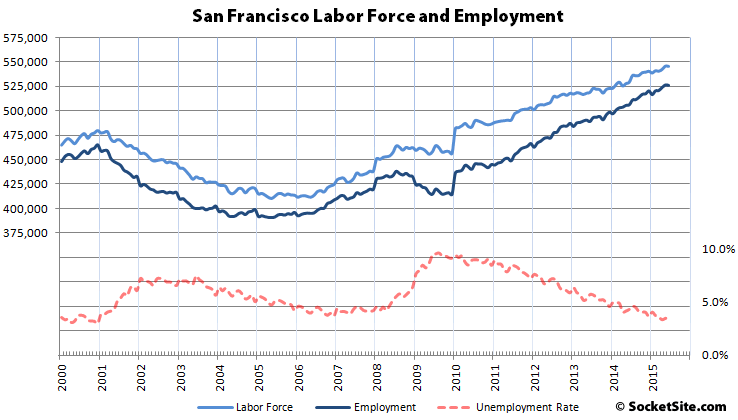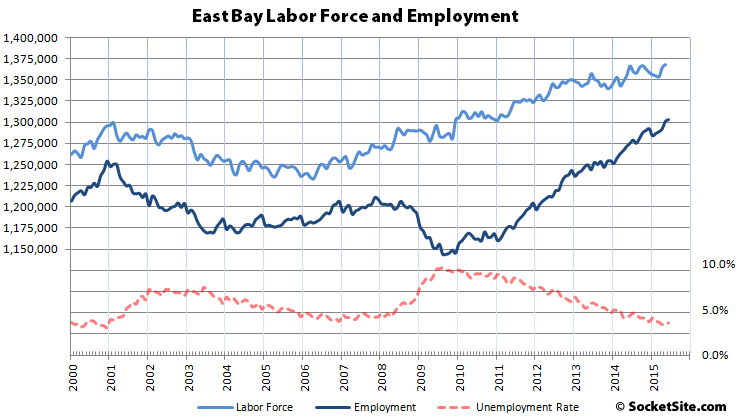The number of people living in San Francisco with a job slipped from an upwardly revised record 526,500 in May to 526,100 in June but remains 19,300 higher on a year-over year basis.
At the same time, East Bay employment increased by 2,200 to a record 1,303,000, up 28,000 versus the same time last year, with employment in Alameda County alone increasing by 1,500 to a record 781,000 in June, up 17,000 year-over-year.
There are currently 60,600 more people living in San Francisco with paychecks than there were at the height of the dot-com peak in 2000 at which point the unemployment rate measured 3 percent with a labor force of 480,000 versus 545,400 last month.
The number of employed San Francisco residents has increased by 89,400 since January of 2010, a 20 percent jump in a little over five years. And the current unemployment rate in San Francisco measures 3.5 percent, down from over 10 percent in January of 2010, according to data provided by California’s Employment Development Department.
The East Bay unemployment rate is currently 4.7 percent, down from 5.8 percent at the same time last year and 11.2 percent in January 2010.
The unemployment rate in Marin ticked up from 3.3 to 3.4 percent in June and held steady at 3.3 percent in San Mateo. The un-adjusted unemployment rate in California held at 6.2 percent.


Population and employment growth are directly correlated to the demand for housing.
east bay will have more of a future for new business; and for businesses hurting due to high office space rents; problematic commute.
[Editor’s Note: Office Rents In S.F. Nearing An All-Time High and Deal Flow Slows, while Demand For Oakland Office Space Nearing Record Rate.]
There was an economic forecast published here I believe a while ago that projected insane level of population growth over the next 20 years or so. Wonder how that is tracking now that there are a few years of data.
I have seen otherwise. The Bay Area is growing but not as fast as the “fast growing” metro centers. Its in the middle range of growth. Doubt there will be a huge increase over the next 20 years. I think the projection is for around 10 million then but by that time some of th faster growing metro areas could overtake the Bay Area and knock it out of the 5th largest US metro area position.
Part of this is growth restrictions. Forbes had an article a few years back that, given normal growth for the Bay Area these past 20 years the population would be 10 million plus now Instead of 7.5 million.